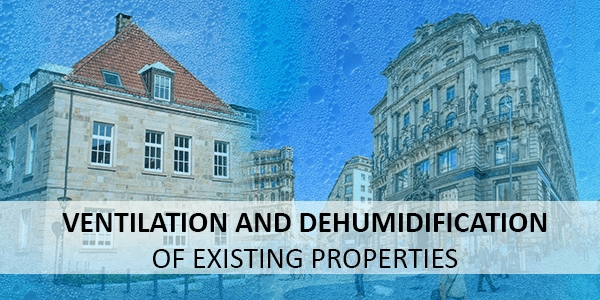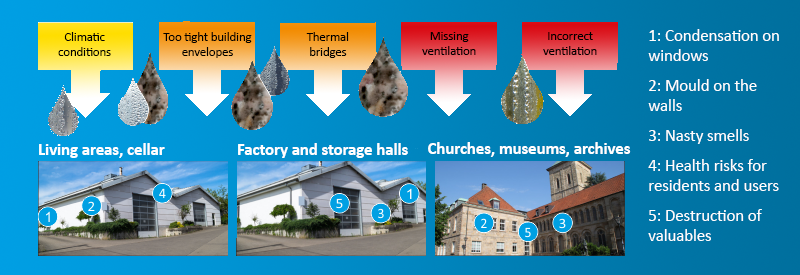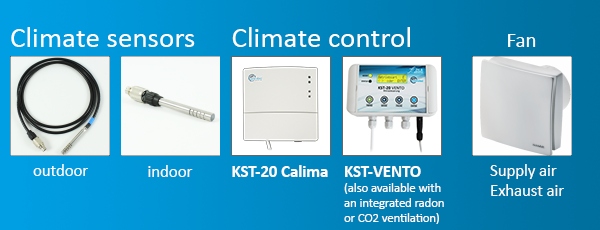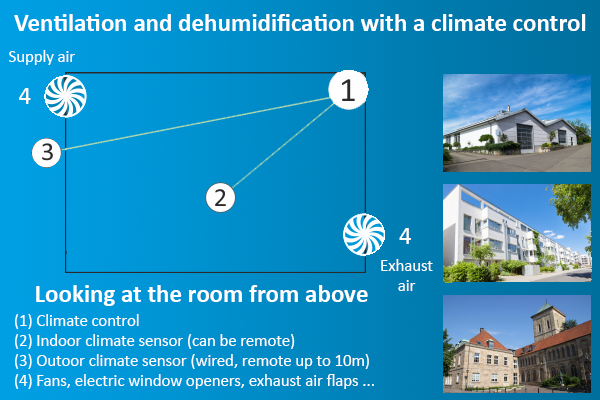
- Written by ZILA GmbH
- font size decrease font size increase font size
Dehumidification and ventilation of existing and listed buildings
Such properties include:
Existing properties
| Churches | Timbered houses | Museums |
| Chapels | Listed buildings | Archives |
Why ventilation and dehumidification of existing properties are a major challenge for manufacturers
The problem with older properties is often the lacking insulation. The brickwork in old churches and timbered houses is also quite cold in most cases. Besides that, the building fabric is exposed to environmental climate influences (decay) and nature (moss growth). Another challenge that should not be underestimated when planning a suitable and promising ventilation concept is the room volume.

If the interior walls are too cold, depending on the climatic conditions, condensation can develop and settle on them within a short period of time. This is an ideal basis for mould formation. So be careful! Once mould has settled on the walls, it can cause serious damage to the building fabric!
A suitable ventilation concept with a controlled air exchange can not only contribute to preserving listed buildings, but also to protecting valuables inside them, such as frescoes, paintings, organs and other wooden objects (e.g. wooden beams).

In some cases, the existing structural conditions can be used for ventilation but in the end, a technical solution is needed that is able to work flexibly with common ventilation devices. Therefore, a climate control, which is able control the most common 230 V ventilation devices is a good choice. From speed-controlled fans and window openers to additional devices for dehumidification - climate controls are the perfect solution in this context.
With our 15 years of experience in the fields of ventilation and dehumidification in existing properties, we can offer you a wide range of climate controls. All of them work with the embedded ventilation technology aH-Controlled, which is based on the absolute humidity.
The aH-Controlled technology: User-independent, needs-based, climate-controlled and energy-efficient ventilation and dehumidification
A sustainably successful and energy-efficient solution for ventilation consists of an intelligent climate control that regularly analyses the measured values for temperature and humidity by an indoor and outdoor climate sensor. Ideally, it should also include at least two ventilation units for supply and exhaust air, according to the size of the room and the structural conditions. The great advantage of this solution is that the climate control automatically determines suitable times for ventilation and carries out room ventilation and dehumidification by comparing the indoor and outdoor climatic conditions, even without users being present in the room.

This ensures that only drier air enters the room from outside and moist air is removed from the room.
How to control fans and avoid condensation with our climate controls
As previously mentioned, user-independent and energy-efficient solutions for ventilation and dehumidification are urgently needed in order to maintain a comfortable feel-good climate and to protect buildings. Now, we will show how such a solution could look like. Here is what you need : a climate control, climate sensors and other ventilation units (e.g. supply and exhaust air fans).
Please note that specific structural conditions cannot be considered here. This is just one possible way of how the implementation could look like.
The climate control can be placed anywhere in the room flexibly. The two climate sensors for the indoor and outdoor climate are plug-on sensors that can be attached to the device easily and effortlessly. Since standard cable lengths of up to 10 m are possible for both sensors, they can be mounted at any position in the room and outside the building.

To guarantee optimum ventilation success, the ventilation device for supply air, e.g. a pipe insertion fan or an electric window opener, should be installed on the same side of the room as the outdoor climate sensor. Ideally, this is the colder north side of a building. Accordingly, the ventilation unit for exhaust air should be placed on that side of the room where the moist air is to be removed.

Video: Needs-based, user-independent cellar dehumidification with our climate control KST-20 VENTO
Where else this solution may be useful?
| Where warm air meets cold walls |
|
| Rooms with sources of moisture |
|
| Where moisture destroys valuables |
|
If you have a moisture problem in your building and are unsure whether the solution shown is applicable for your premises, simply give us a call or send us an email.
We are looking forward to your enquiry!
Useful links and documents
Pictures Credits Fotolia.com © Joerg Sabel, © fotsform, © thomasknospe, © Tiberius Gracchus
